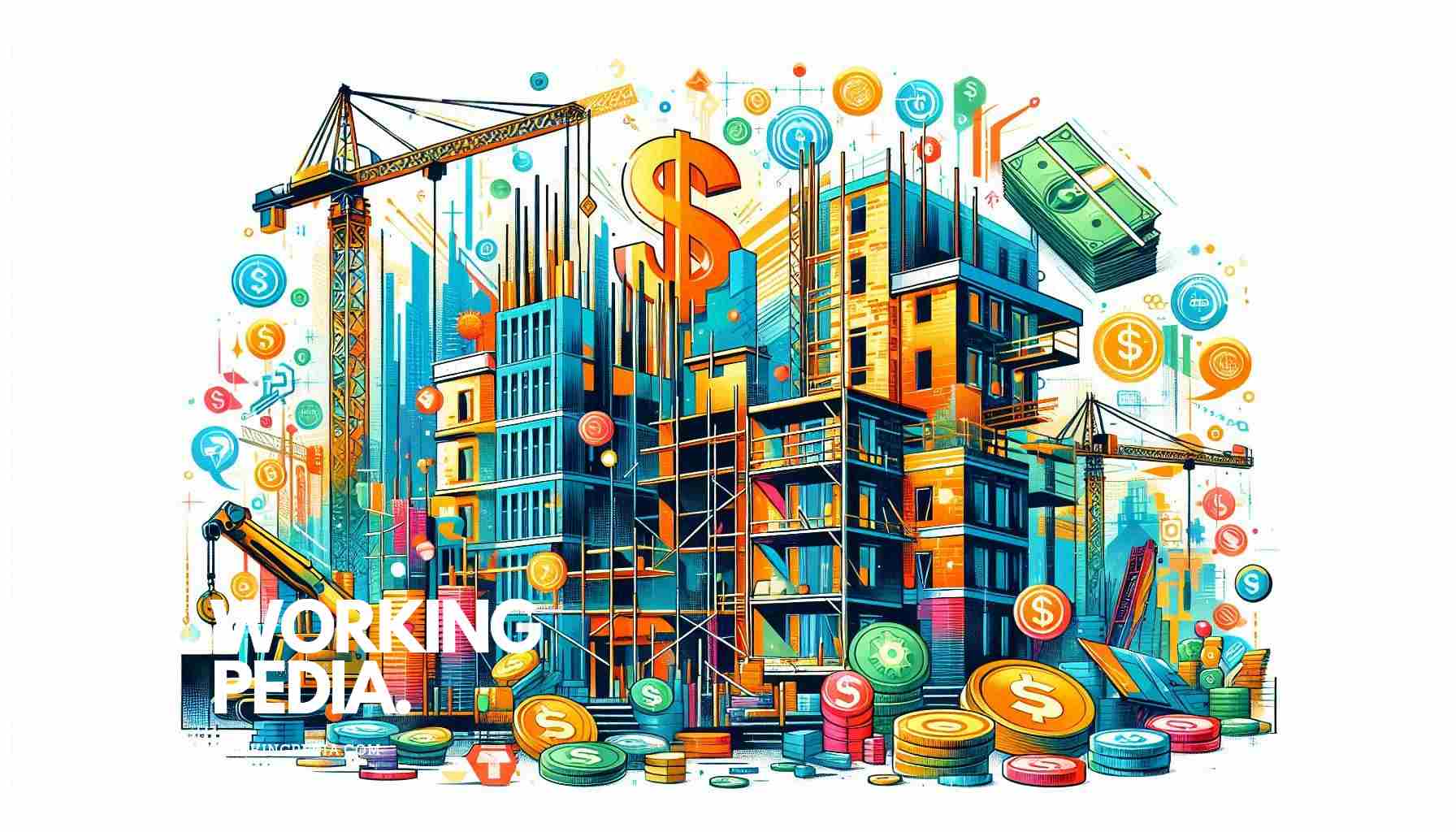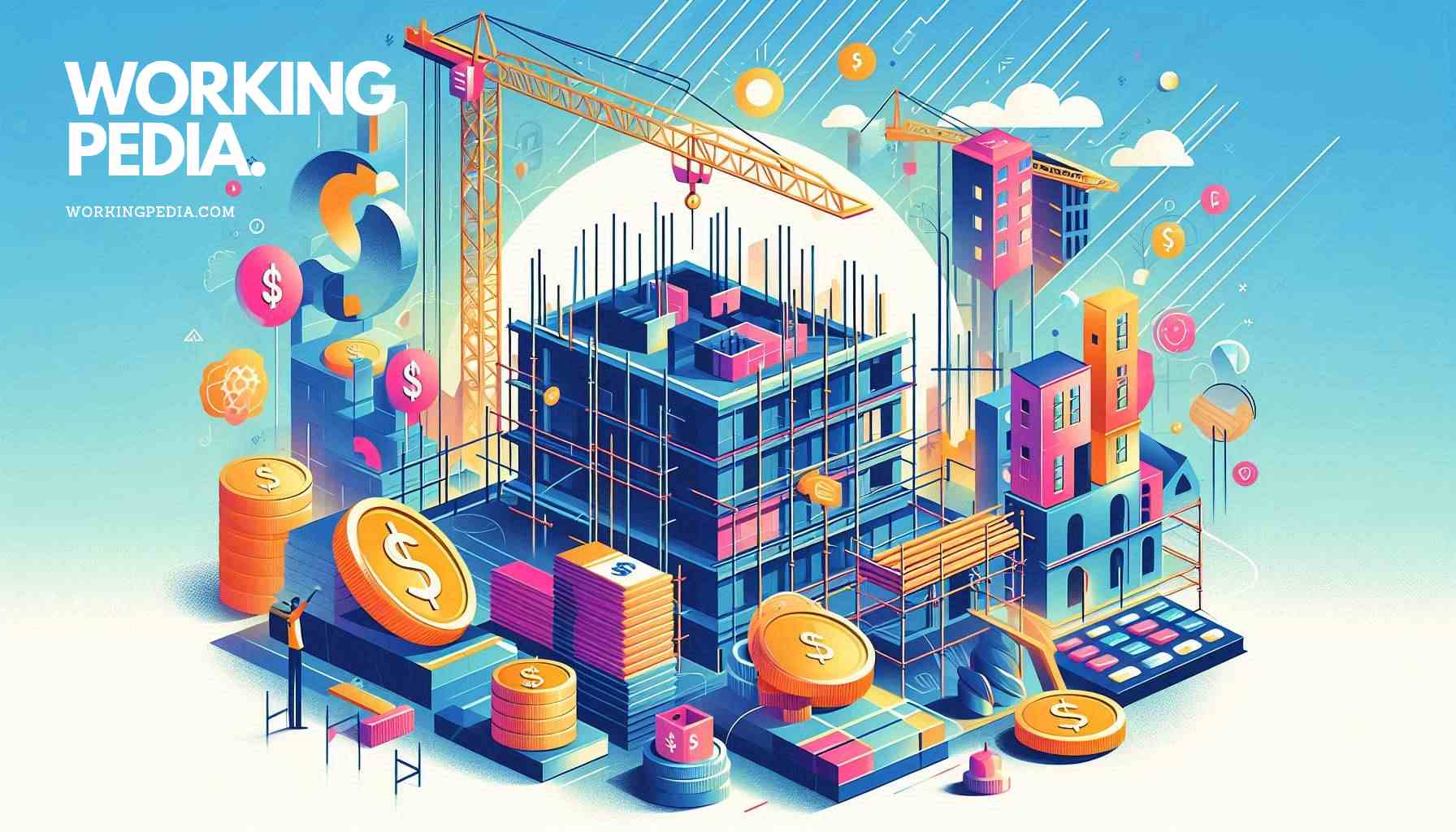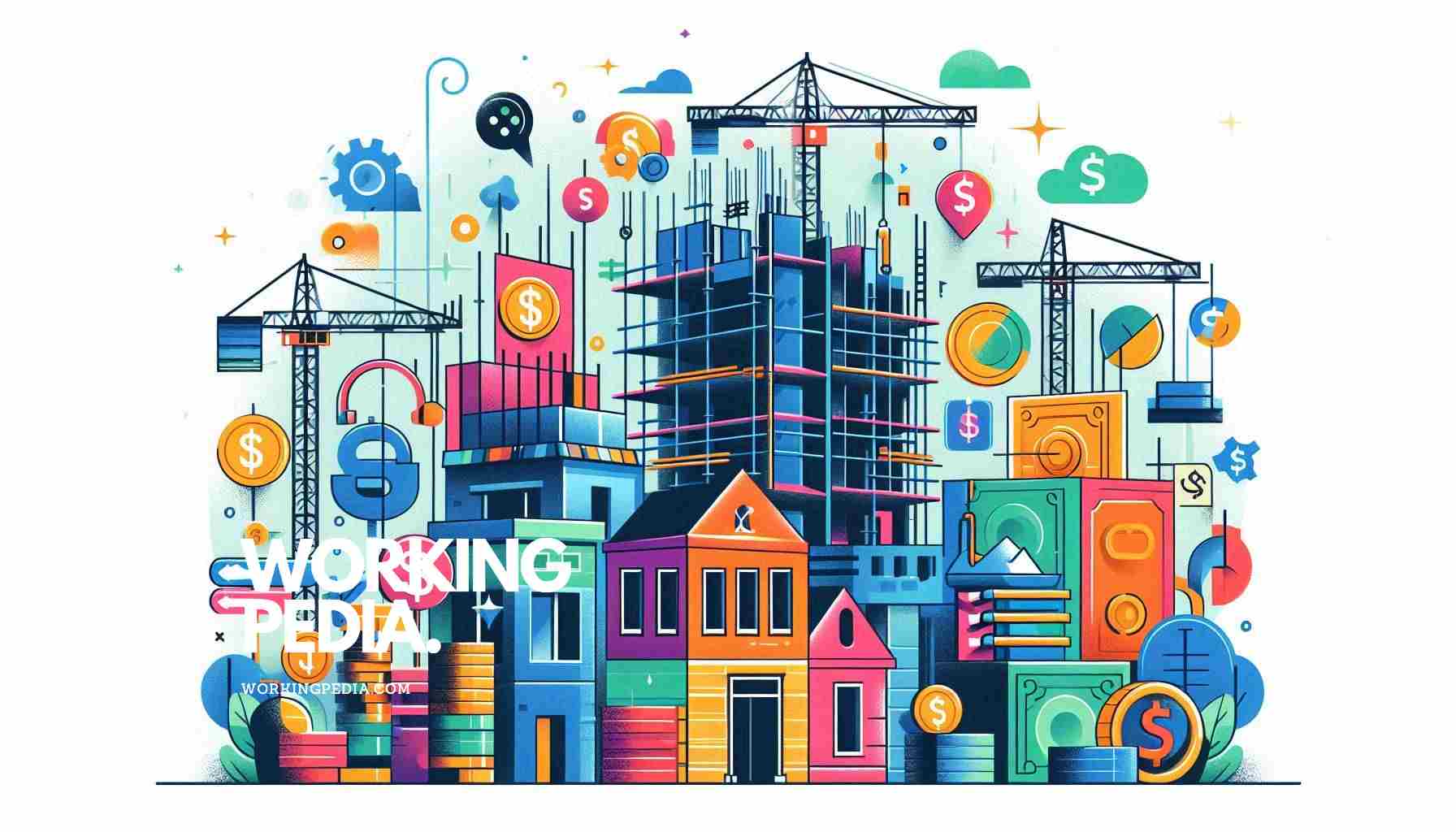Ever dreamed of building your own home from the ground up? Or maybe you’re considering a major renovation project? or maybe for your business? If so, you’ve probably encountered the term “construction loan” in your research. These specialized financial products can be the key to turning your building dreams into reality, but they’re not your average mortgage.
Construction loans are like the scaffolding of the financial world – they provide temporary support during the building process, before being replaced by a more permanent structure (aka a traditional mortgage). Understanding how these loans work is crucial for anyone embarking on a building project, whether it’s a new home, a commercial property, or a major renovation.
Key Takeaways:
- Construction loans are short-term loans used to finance building projects
- They typically have higher interest rates and require larger down payments than traditional mortgages
- The loan is usually disbursed in stages as the project progresses
- Once construction is complete, the loan is often converted to a permanent mortgage

What Exactly is a Construction Loan?
A construction loan is a short-term loan used to finance the building of a home or other real estate project. Unlike a traditional mortgage that provides a lump sum to purchase an existing property, a construction loan is typically disbursed in stages as the project progresses. This staged approach, known as a draw schedule, helps ensure that funds are available when needed and reduces risk for the lender.
These loans usually have terms of one year or less and higher interest rates compared to conventional mortgages. The idea is that once construction is complete, you’ll refinance into a traditional mortgage with a longer term and lower rate.
Types of Construction Loans
There’s no one-size-fits-all when it comes to construction loans. Depending on your project and financial situation, you might consider one of these options:
Construction-to-Permanent Loans: This is like a two-for-one deal. You borrow money to finance the construction, and once it’s complete, the loan automatically converts to a traditional mortgage. It’s convenient because you only have to go through one approval process and pay one set of closing costs.
Construction-Only Loans: As the name suggests, these loans only cover the construction phase. Once the building is complete, you’ll need to either pay off the loan in full or obtain a separate mortgage to pay off the construction loan. This option might be good if you have significant cash reserves or if you’re planning to sell the property upon completion.
Renovation Loans: If you’re not building from scratch but doing a major renovation, this might be your best bet. These loans allow you to borrow based on the projected value of your home after renovations, rather than its current value.
Owner-Builder Loans: For the brave souls who plan to act as their own general contractor, these loans can be a good option. They’re harder to qualify for, as lenders see them as riskier, but they can save you money if you have the necessary skills and experience.

How Construction Loans Work
Now that we’ve covered the basics, let’s dive into the nitty-gritty of how these loans actually work. It’s a bit like a financial choreography, with multiple steps and players involved:
Application and Approval: This process is more involved than a traditional mortgage application. In addition to your financial information, you’ll need to provide detailed plans for the project, including blueprints, a timetable, and a realistic budget. The lender will also want to see that you’re working with a licensed contractor.
Appraisal: The lender will order an appraisal based on the plans and specs of your project. This “future value” appraisal estimates what the property will be worth once construction is complete.
Loan Disbursement: Once approved, the loan funds aren’t just handed over in a lump sum. Instead, they’re disbursed in stages that align with key phases of the construction process. This is where the draw schedule comes in.
Interest Payments: During construction, you typically only pay interest on the amount that’s been disbursed. This can help keep your costs down during the building phase when you might be paying rent or a mortgage on your current home.
Inspections: Before each disbursement, the lender will usually require an inspection to verify that the work has been completed as planned. This helps protect both you and the lender from contractor fraud or subpar work.
Conversion or Refinance: Once construction is complete, you’ll either enter the permanent phase of your loan (for construction-to-permanent loans) or you’ll need to refinance into a traditional mortgage (for construction-only loans).
Qualifying for a Construction Loan
If you thought qualifying for a traditional mortgage was tough, brace yourself. Construction loans are considered riskier for lenders, so the qualification process is typically more stringent. Here’s what you can expect:
Credit Score: You’ll typically need a credit score of at least 680, although some lenders may require 720 or higher. The higher your score, the better your chances of approval and favorable terms.
Down Payment: Be prepared to put down 20-30% of the total project cost. Some lenders may require even more. This larger down payment helps offset the risk for the lender.
Debt-to-Income Ratio: Your DTI should ideally be 45% or lower. This includes your estimated payments on the construction loan.
Detailed Project Plans: Lenders want to see that you’ve done your homework. You’ll need to provide comprehensive plans, including blueprints, a detailed budget, and a realistic timeline.
Contractor Approval: Your chosen contractor will need to be vetted and approved by the lender. They’ll look at the contractor’s experience, financial stability, and track record.
Reserve Funds: Many lenders require that you have cash reserves to cover potential cost overruns or unexpected expenses.
Navigating the world of construction loans can be complex, but understanding the basics is the first step towards making your building dreams a reality. In the next section, we’ll delve deeper into the pros and cons of construction loans, and provide some tips for managing your loan effectively throughout the building process.

Alternatives to Construction Loans
Okay, so maybe a construction loan isn’t your cup of tea. No worries! There’s more than one way. Let’s look at some other options:
- Home Equity Loans: Got some equity built up in your current home? You might be able to tap into that. It’s usually easier to qualify for than a construction loan, and the interest rates can be lower. Just remember, you’re putting your home on the line here.
- Home Equity Line of Credit (HELOC): This is like a credit card, but it uses your home as collateral. You can borrow what you need, when you need it. Pretty flexible, if you ask me. But watch out for those variable interest rates – they can sneak up on you!
- Cash-Out Refinance: If you’ve got a good chunk of equity, you could refinance your current mortgage for more than you owe and pocket the difference. It’s a solid option if you can snag a lower interest rate than your current mortgage.
- Personal Loans: These are unsecured, which means no collateral needed. The downside? Higher interest rates, usually. But if you’ve got stellar credit, you might get a decent deal.
- Seller Financing: This one’s a bit out there, but hear me out. If you’re buying land to build on, sometimes the seller might be willing to finance part of the purchase. It’s rare, but it happens!
Remember, every situation is unique. What worked for me might not work for you. It’s always a good idea to chat with a financial advisor before making any big decisions. They can help you crunch the numbers and figure out what’s best for your specific situation.
Pros and Cons of Construction Loans
Like any financial product, construction loans have their ups and downs. Let’s break ’em down:
Pros:
- Flexibility to build your dream home or project
- Interest-only payments during construction
- Funds released in stages, reducing risk
- Potential for increased property value
Cons:
- Higher interest rates compared to traditional mortgages
- Larger down payment required
- Stricter qualification criteria
- Risk of cost overruns or project delays
Construction loans present both advantages and disadvantages that warrant careful consideration. The primary benefits include the ability to customize a property to one’s exact specifications and the potential for increased property value upon completion. Additionally, the structure of interest-only payments during construction and the staged release of funds can be financially advantageous. However, these loans typically entail higher interest rates and more substantial down payments compared to conventional mortgages. Furthermore, the qualification process is often more rigorous, and borrowers must be prepared for the possibility of cost overruns or project delays. A thorough assessment of one’s financial situation and risk tolerance is advisable before pursuing this financing option.
Managing Your Construction Loan
Upon securing a construction loan, it is imperative to implement a comprehensive management strategy. Adherence to the projected timeline is crucial, as delays can result in increased interest expenses. Maintaining open lines of communication with the lending institution is advisable to ensure transparency regarding project progress and potential obstacles. Vigilant monitoring of fund disbursements is necessary to verify appropriate allocation. It is prudent to establish a contingency fund for unforeseen circumstances. For those with construction-only loans, initiating the process of securing permanent financing well in advance is recommended. While the construction process can be complex, proper financial management and foresight can facilitate the successful realization of one’s architectural vision. It is important to note that such projects require patience and diligence.
Stay on Schedule: Time is money, especially with construction loans. Keep your project on track to avoid extra interest charges.
Communicate Regularly: Keep your lender in the loop about progress and any hiccups. They’re your partner in this dance.
Monitor Disbursements: Make sure funds are being used as intended. It’s your money, after all!
Prepare for the Unexpected: Have a contingency fund for those “oops” moments. Trust me, they’ll happen.
Plan for Transition: If you have a construction-only loan, start shopping for your permanent mortgage early.
Building your own place is a wild ride, but with the right financial tools and know-how, you can turn those blueprints into your dream home. Just remember, patience is key – Rome wasn’t built in a day, and neither will your project be!
Construction projects often face challenges, but with careful financial management and realistic expectations, you can successfully navigate the process. Remember that construction timelines can be unpredictable, so flexibility and patience are key attributes for a smooth experience.
By following these guidelines, you can better manage your construction loan and work towards completing your project efficiently and within budget.

Frequently Asked Questions
1. What’s the minimum credit score needed for a construction loan?
Most lenders look for a credit score of at least 680, but some may require 720 or higher. It’s like a game of limbo – the higher you can go, the better your chances! A higher score could also snag you a lower interest rate, saving you some serious dough in the long run.
2. How much of a down payment do I need for a construction loan?
Brace yourself – you’re typically looking at 20-30% of the total project cost. Some lenders might even ask for more. It’s a bigger chunk than your average mortgage, but remember, you’re not just buying a house, you’re creating one from scratch. Think of it as your investment in making your dream home a reality.
3. Can I use the equity in my current home for a down payment on a construction loan?
Absolutely! Many folks use the equity in their current home to finance their new build. You could refinance your existing mortgage, take out a home equity loan, or use a home equity line of credit (HELOC). Just be sure to crunch the numbers and consider the impact on your overall financial picture.
4. How long does a typical construction loan last?
Most construction loans have terms of 12 to 18 months. It’s like a short-term fling before settling down with a long-term mortgage. Once construction is complete, you’ll either refinance into a permanent mortgage or begin the repayment phase of a construction-to-permanent loan.
5. What happens if construction takes longer than expected?
Life happens, and construction delays are not uncommon. If your project runs over schedule, you may be able to get an extension on your loan. However, this often comes with fees and additional interest, so it’s best to build some buffer time into your initial timeline. Communication with your lender is key – don’t wait until the last minute to discuss potential delays!
6. Can I act as my own general contractor to save money?
While it’s possible to be your own general contractor, it’s not for the faint of heart. Some lenders offer owner-builder loans, but they often come with stricter requirements and higher down payments. You’ll need to prove you have the necessary experience and skills. If you’re up for the challenge, it could save you money, but be prepared for a lot of hard work and potential stress.
7. How are funds disbursed in a construction loan?
Construction loan funds are typically released in stages, known as draws. These align with major phases of the construction process, like completing the foundation, framing, and so on. Before each disbursement, the lender usually requires an inspection to verify the work has been completed as planned. It’s like a financial scavenger hunt – complete each stage to unlock the next chunk of funding!
8. What’s the difference between a construction-to-permanent loan and a construction-only loan?
A construction-to-permanent loan is like a two-in-one deal. It finances the construction and then automatically converts to a permanent mortgage once building is complete. You only go through one approval process and pay one set of closing costs. A construction-only loan, on the other hand, only covers the building phase. Once construction is finished, you’ll need to either pay it off in full or get a separate mortgage to pay off the construction loan. It’s like choosing between a combo meal or ordering items separately – each has its pros and cons depending on your situation.
9. Can I get a construction loan for a renovation project?
You betcha! While many people think of construction loans for new builds, they can also be used for major renovation projects. These are often called renovation loans or rehab loans. They allow you to borrow based on the projected value of your home after renovations, rather than its current value. So if you’re dreaming of turning that fixer-upper into a showstopper, a renovation loan might be just the ticket.
10. What happens if my builder goes bankrupt during construction?
This is a nightmare scenario, but it does happen. That’s why it’s crucial to work with a reputable, financially stable contractor. Most construction loans require you to work with an approved builder for this very reason. If the worst does happen, you’ll need to work closely with your lender to find a solution. This might involve bringing in a new contractor to complete the work. It’s a good idea to have a contingency plan in place, just in case. Remember, your lender wants your project to succeed too – they’re invested in your success!
Must See Related Construction
Construction https://workingpedia.com/category/construction





